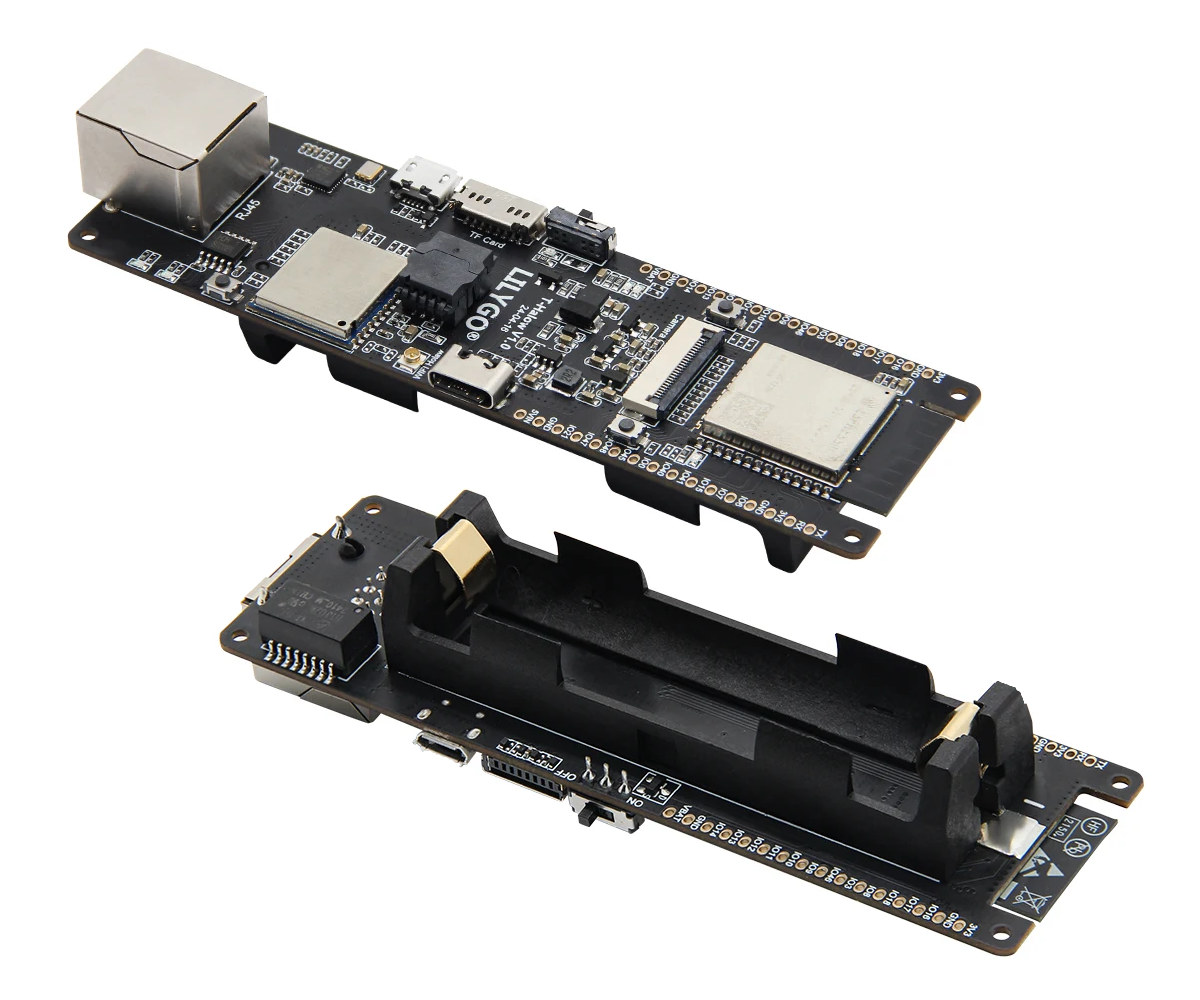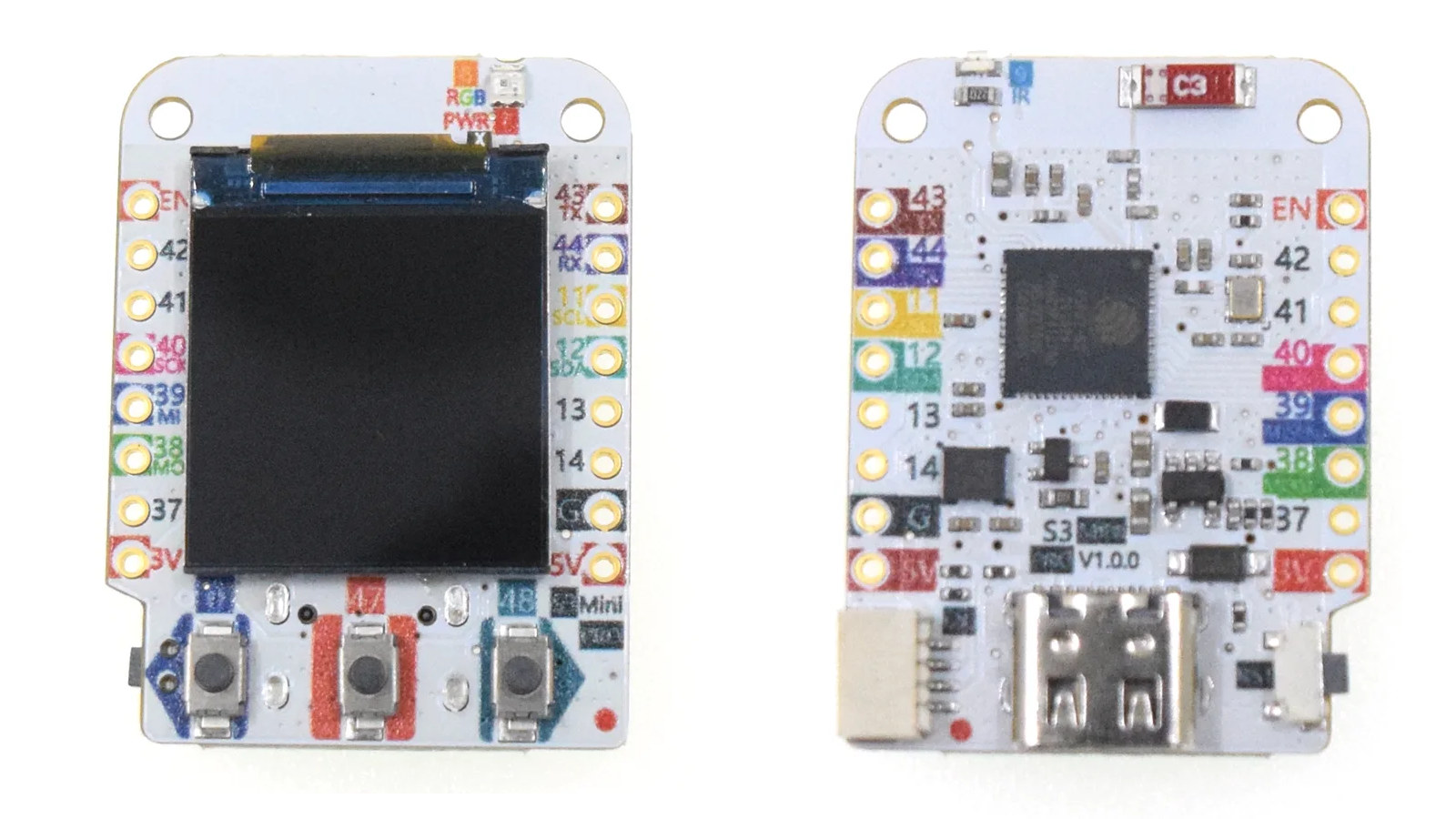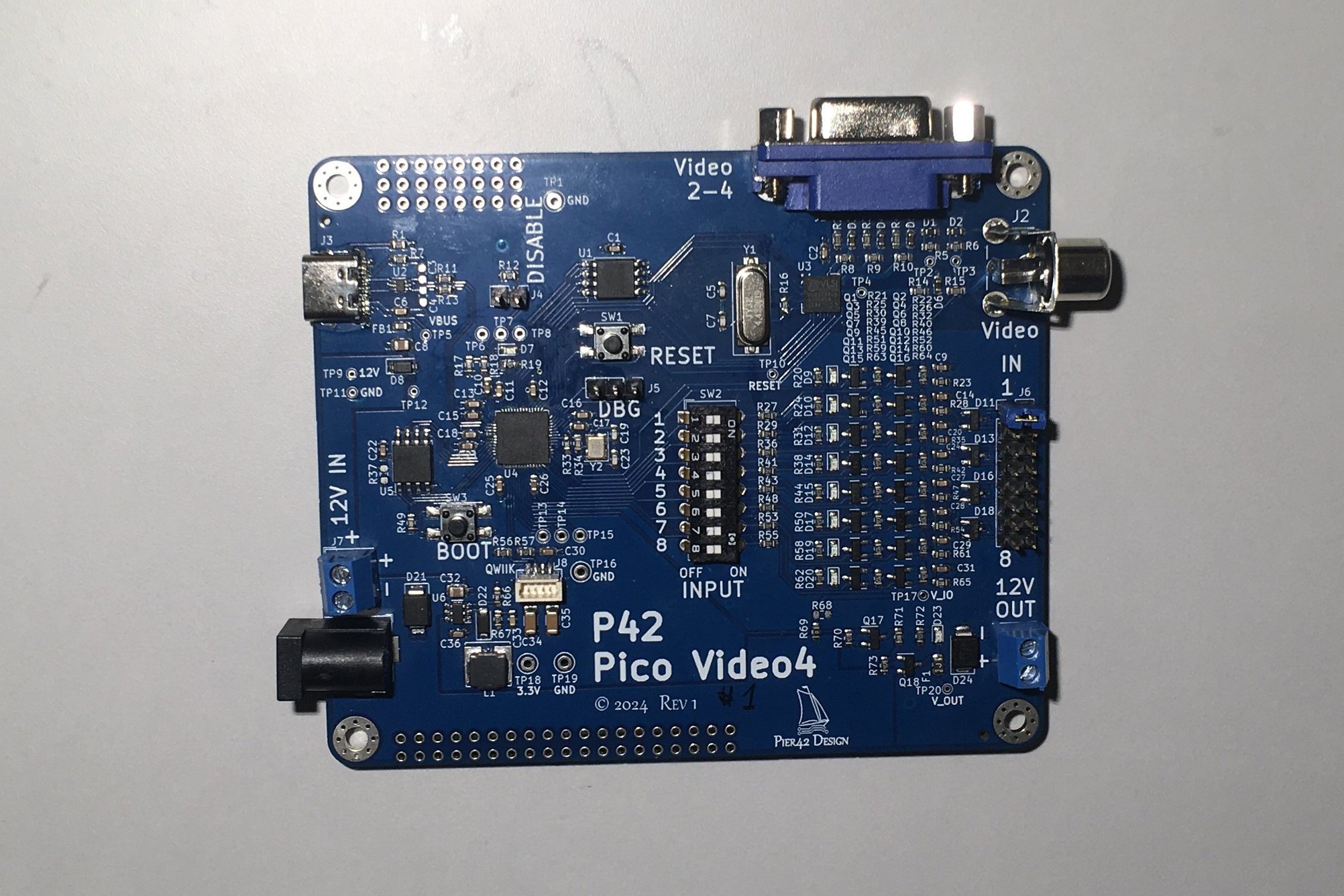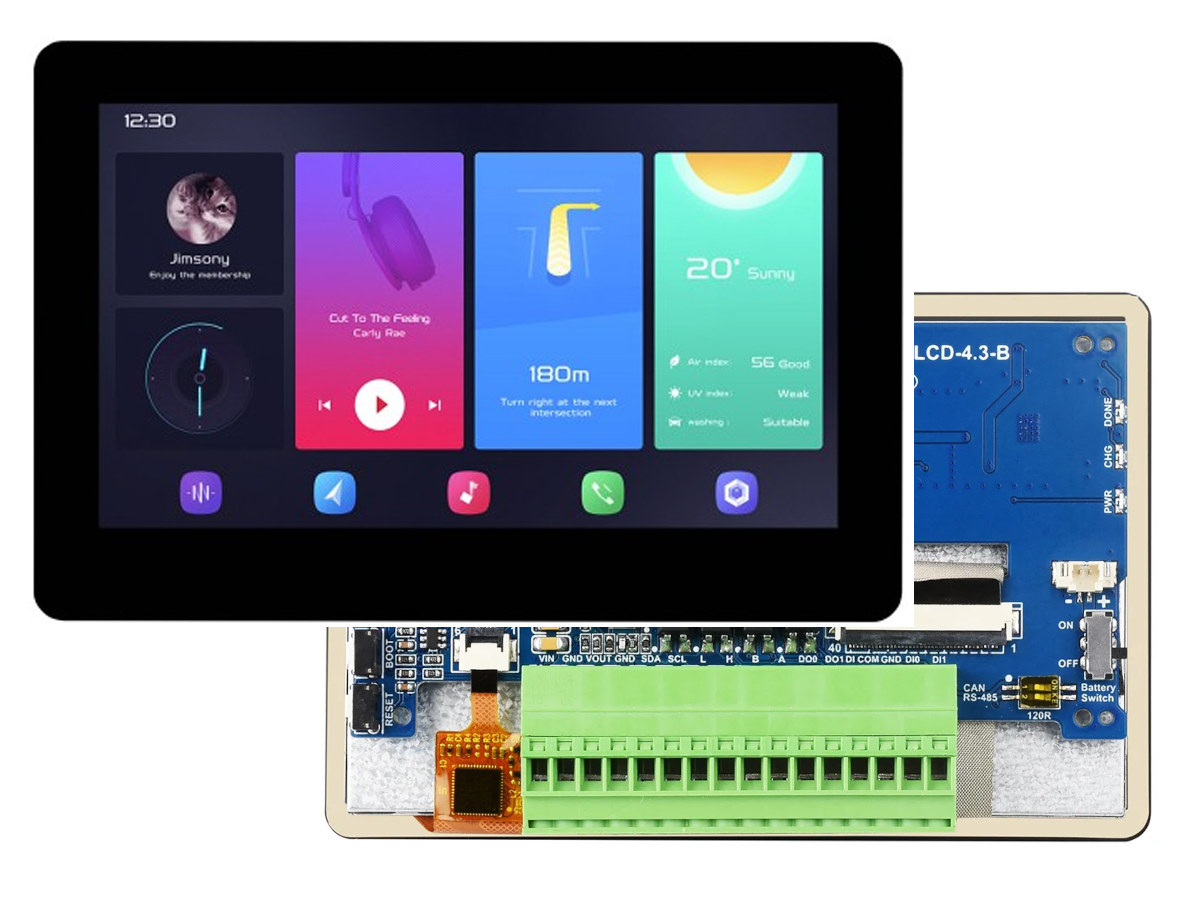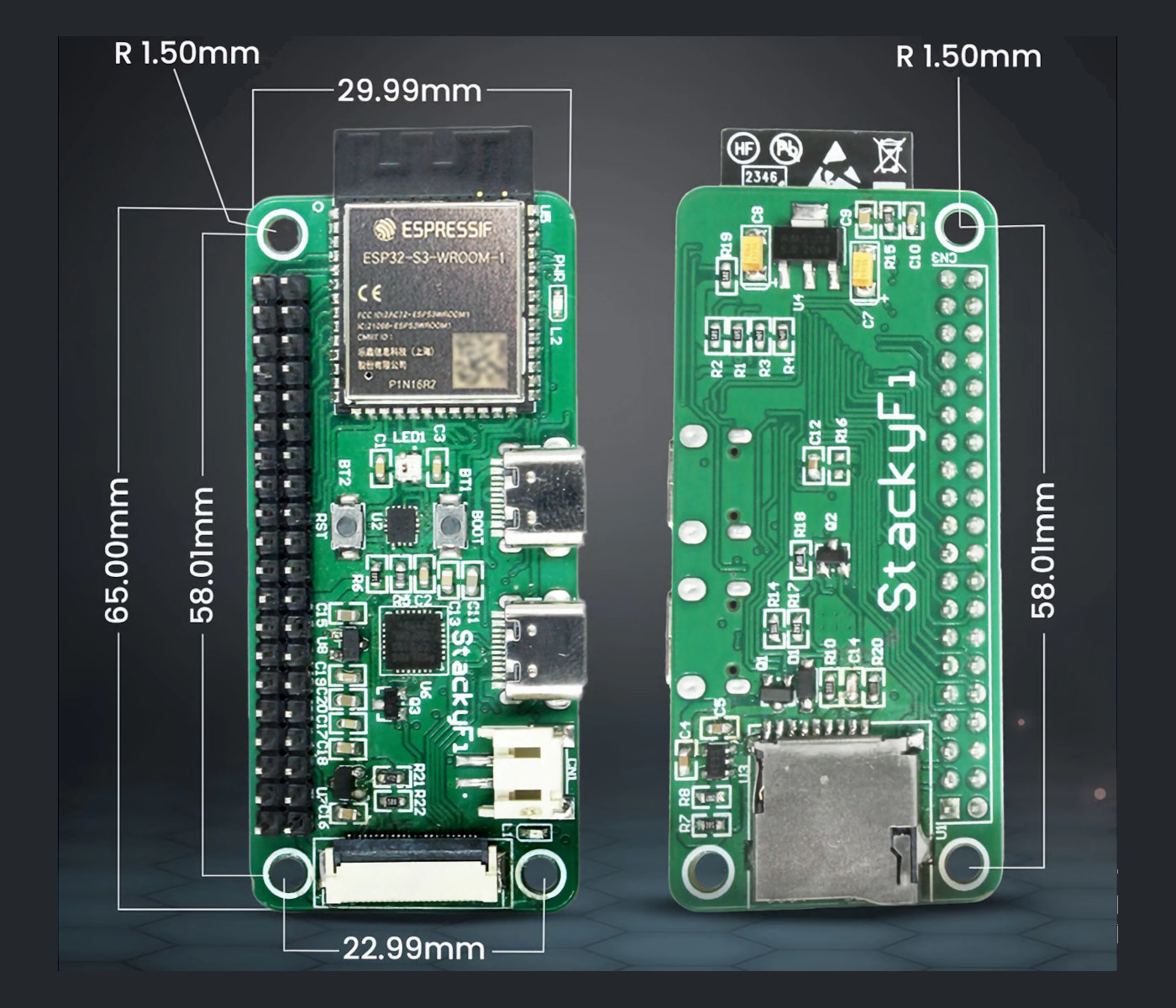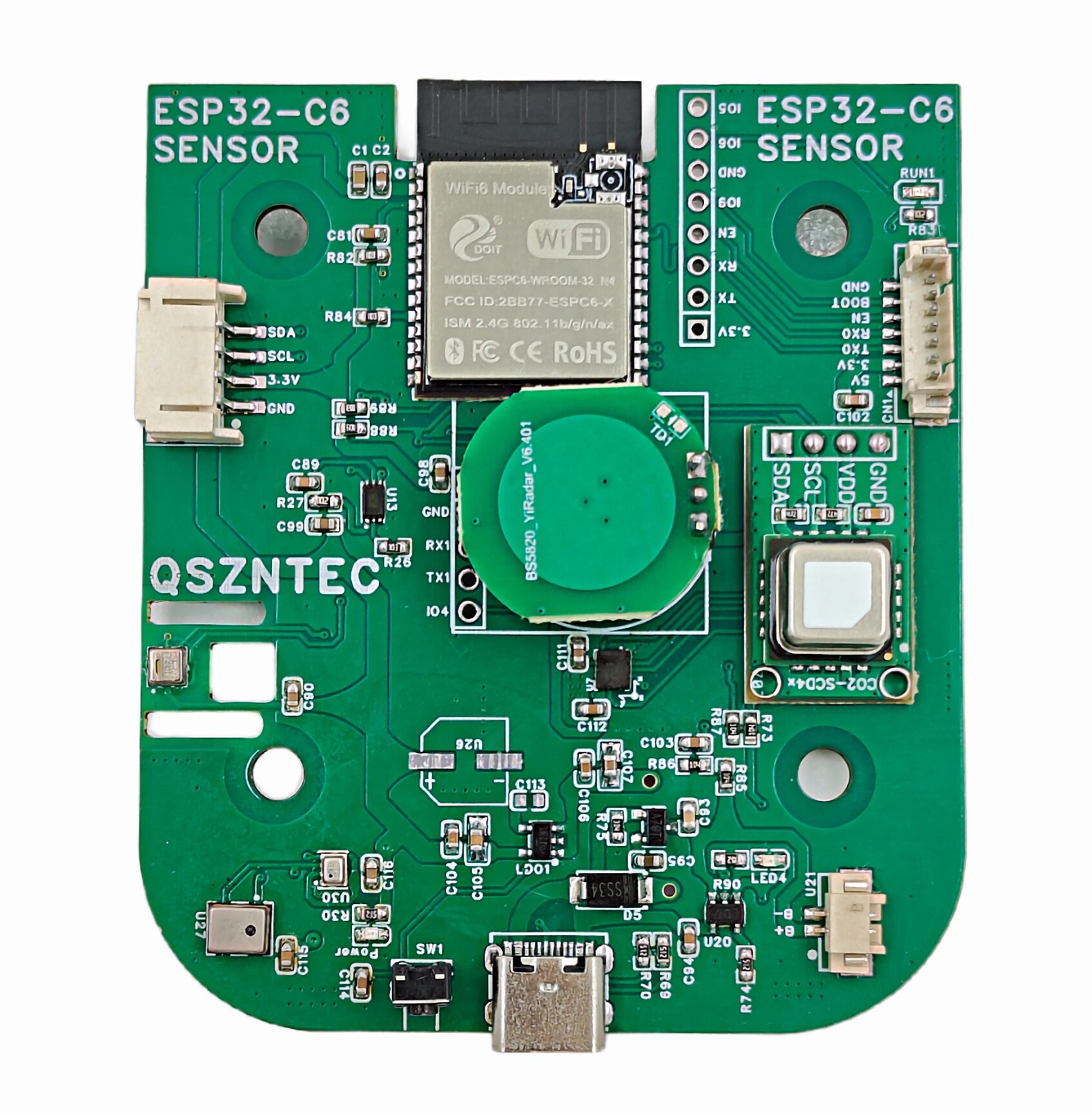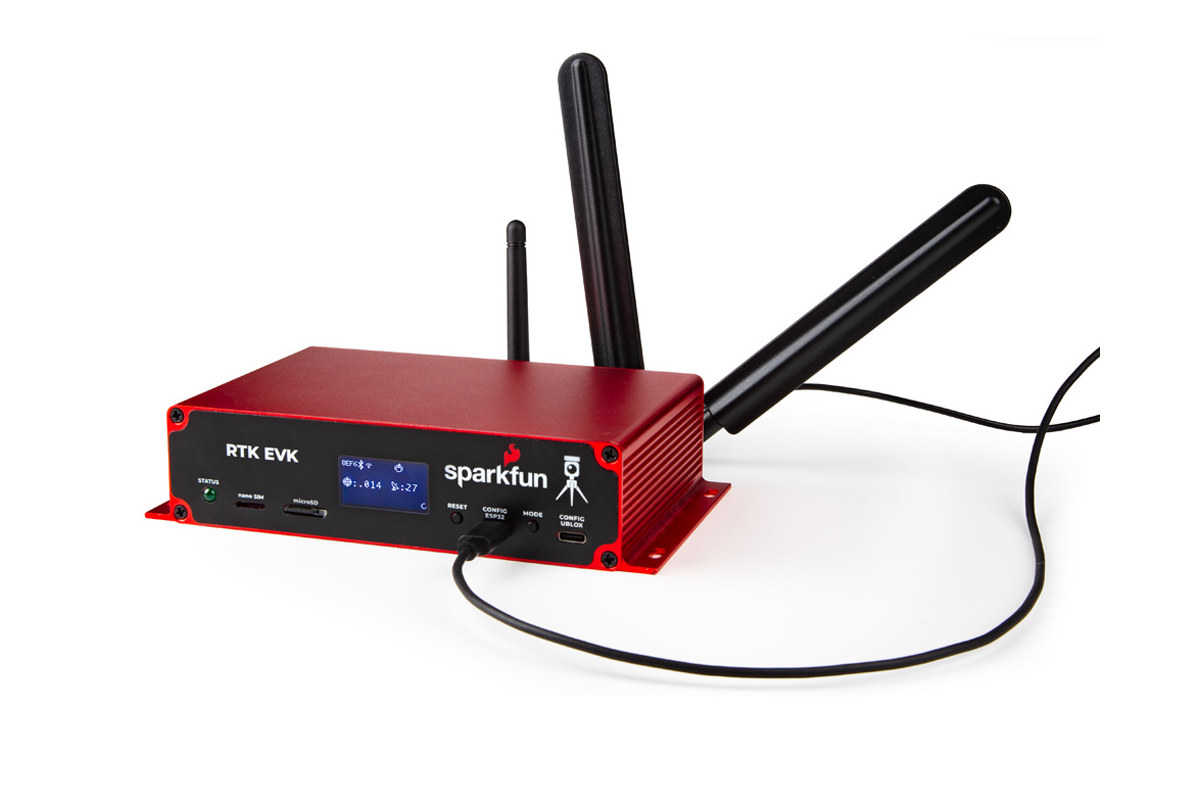LILYGO T-Halow is an ESP32-S3 board equipped with a WiFi HaLow module with up to 1.2km range, a connector compatible with OV2640 and OV5640 camera modules, and an 18650 battery holder for power, as well as several GPIOs for expansion. We first wrote about 802.11ah low-power long-range WiFi standard operating at 900 MHz in 2014, but adoption has been slow and we’ve seen a few 802.11ah (WiFi HaLow) chips from Newracom and Morse Micro over the years, as well as USB adapters, a Raspberry Pi HAT, a mini PCIe card, gateways, and some development boards. All those rely on a Linux host, but the LILYGO T-Halow features a TX-AH WiFI HaLow module from Taixin Semiconductor that’s controller by AT commands through an ESP32-S3 or a micro USB port. LILYGO T-Halow specifications: Wireless modules ESP32-S3-WROOM-1 wireless module SoC – ESP32-S3 dual-core Tensilica LX7 microcontroller @ up to 240 MHz with 2.4 […]
LOLIN S3 Mini Pro – A tiny ESP32-S3 board with a 0.85-inch display and a multi-color PCB
LOLIN S3 Mini Pro is a tiny ESP32-S3 WiFi and BLE board with a 0.85-inch display and it’s one of the first boards I’ve seen with a multi-color PCB that some PCB manufacturers have been offered recently. The board features an ESP32-S3FH4R2 microcontroller with 4MB flash and a 2MP PSRAM, a 128×128 TFT display, a 6-axis motion/attitude sensor, and GPIO headers that make it compatible with LOLIN D1 mini shields for expansion. LOLIN S3 Mini Pro specifications: SoC – Espressif Systems ESP32-S3FH4R2 CPU – Dual-core Tensilica LX7 microcontroller @ up to 240 MHz Wireless – 2.4 GHz 802.11n WiFi 4 and Bluetooth 5.0 LE connectivity Memory – 2MB PSRAM Storage – 4MB SPI flash Display – 0.85-inch 128×128 LCD TFT display with GC9107/GC9A01 driver Sensor – 6-axis MEMS IMU/attitude sensor (QMI8658C) Expansion 2x 8-pin headers with up to 12x GPIO, ADC, DAC, I2C, SPI, UART, USB OTG; compatible with LOLIN […]
Lattice MachXO5D-NX FPGA family enables Hardware Security in Programmable FPGAs
Lattice Semiconductor has recently introduced the MachXO5D-NX FPGA family, which integrates a hardware root of trust (RoT) into low-power FPGAs. This addresses security challenges by combining on-chip Flash memory and hardware encryption to minimize code capture risks during load time. The MachXO5D-NX family includes three variants with logic cell counts of 27k (FMXO5-25), 53k (LFMXO5-55T), and 96k (LFMXO5-100T). These FPGAs feature built-in hardware encryption, a cryptographic engine supporting AES-256, ECDSA-384/521, SHA2-256/384/512, and RSA 3072/4096, and a unique secret identity (USID) for device identity protection. Built on a 28-nm fully-depleted silicon-on-insulator (FD-SOI) process, these FPGAs reduce power consumption by 75% and lower soft error rates by 100x(as the company mentions). They support interfaces such as MIPI D-PHY (CSI-2, DSI), LVDS, Gigabit Ethernet, and PCIe, making them suitable for secure edge applications. Lattice MachXO5D-NX FPGA family specifications FPGA – Lattice Semi MachXO5D-NX FPGA family (27k (FMXO5-25), 53k (LFMXO5-55T), and 96k (LFMXO5-100T)) Programmable […]
Raspberry Pi RP2040-based Pico Video4 display board features 4 composite video outputs
The Pico Video4 Display is a Raspberry Pi RP2040-powered board that supports up to 4 analog composite video display interfaces with dedicated frame buffer memory accessible via SPI. The four video outputs are sent out through an RCA connector and a VGA DB15-HD connector that uses the red, green, and blue channels to create a composite video signal. The Pico Video4 Display is based on the Raspberry Pi RP2040 microcontroller chip and the VLSI VS23S040 four-megabit static RAM device with a video display controller that can output NTSC, PAL, and VGA video from the memory array. It provides the composite video outputs with a dedicated frame buffer and other hardware. This ensures that the RP2040’s limited processing power and memory are not hogged up in generating the video signal, leaving room for other major tasks. It has 8 inputs that are voltage-compatible to the input voltage, from 5V to 12 […]
4.3-inch ESP32-S3 wireless touchscreen display features terminal block with RS485, CAN Bus, I2C, DIO
Waveshare “ESP32-S3-Touch-LCD-4.3B” is a capacitive touch display development board built around an ESP32-S3 SoC with RS485, CAN Bus, I2C, and isolated DIO interfaces provided through a terminal block. The devkit features a 4.3-inch capacitive touch display that has an 800×480 resolution, RTC, and a microSD card slot. Combined with a wide input voltage range of 7-36V DC, the ESP32-S3-Touch-LCD-4.3V is suitable for IoT HMI, smart home automation, and more. Previously we have written about similar development boards from Waveshare like the ESP32-S3 1.69-inch touch display, the $15 Waveshare 1.69-inch IPS touch LCD module, the Waveshare RP2040-LCD-0.99-B rounded display but they would offer no expansion pins or GPIO through pads or 4-pin connectors, while the ESP32-S3 display features a terminal block with additional interfaces like RS485 pr CAN Bus that should make wiring more convenient and versatile for the target applications. Waveshare ESP32-S3 touch LCD specifications: Wireless MCU – Espressif Systems ESP32-S3R8 […]
StackyFi ESP32-S3 board features camera connector, 40-pin GPIO header for Raspberry Pi HAT (Crowdfunding)
SB Components’ StackyFi is an ESP32-S3 WiFi and Bluetooth IoT board with a 40-pin GPIO header compatible with most Raspberry Pi HAT expansion boards and a camera connector for image capture to a microSD card or machine learning applications. The Raspberry Pi Zero-sized board also comes with two USB Type-C ports, one “native” and the other for serial debugging, an IMU sensor, an RGB LED, and Boot and Reset buttons. The board can be powered through one of the USB-C ports or a LiPo battery. It partially builds upon the earlier StackPi board with a Raspberry Pi RP2040 microcontroller. StackyFi specifications: Wireless module – ESP32-S3-WROOM-1 MCU – ESP32-S3 dual-core Tensilica LX7 up to 240 MHz with 512KB SRAM Memory – TBD PSRAM Storage – TBD flash Wireless – WiFi 4 and Bluetooth LE 5 PCB antenna Storage – MicroSD card Camera I/F – FPC connector that works with OV2640 camera […]
Qsen-07 multi-sensor wireless board can detect CO2, VOC, temperature, humidity, ambient light, and attitude
The Qsen-07 multi-sensor board is an ESP32 wireless development board that combines several useful sensors into one device, making it easier to control, monitor, and enhance your home environment. It is a recent product from Maker Go, a China-based hardware company, which claims the board is “fully integrated with ESPHome and Home Assistant“. But as noted in a reader’s comment below, ESPHome on ESP32-C6 is still a work in progress, and the YAML configuration file for the board has yet to be provided by the company. The Qsen-07 multi-sensor board is “designed for health-conscious and tech-savvy homeowners” and can monitor air quality and other environmental variables to ensure a safe and smart living space. It features up to seven sensors, including two air quality sensors, a temperature and humidity sensor, an ambient light sensor, a barometric pressure sensor, an attitude gyro sensor, and an optional radar sensor. The Aosong AGS10 […]
SparkFun RTK EVK offers GNSS with centimeter accuracy, WiFi, Bluetooth, 4G LTE Cat 1, and Ethernet connectivity
SparkFun RTK EVK is a fully-enclosed GNSS platform designed for fixed or mobile high-precision positioning and navigation applications with centimeter accuracy thanks to RTK (real-time kinematic) technology implemented with modules from u-blox. About two months ago, Sparkfun introduced the RTK Torch waterproof GNSS surveyor with Unicore UM980 GNSS module with RTK support, ESP32 for WiFi/Bluetooth, and an STM32WLE5C LoRa SoC. The SparkFun RTK EVK (evaluation kit) may drop LoRa connectivity, but it’s a more versatile platform with WiFi, Bluetooth, Ethernet, and LTE Cat 1 cellular connectivity, besides support for L1 + L2 RTK GNSS with L-Band correction. Sparkfun RTK EVK specifications: GNSS Receiver – u-blox ZED-F9P Concurrent reception of GPS, GLONASS, Galileo, and BeiDou Receives both L1C/A and L2C bands 184-channel u-blox F9 engine Time to First Fix: 25s (cold), 2s (hot) Max Navigation Rate: 20Hz / 25Hz depending on mode Horizontal Position Accuracy: 2.5m without RTK; 0.010m with RTK […]


